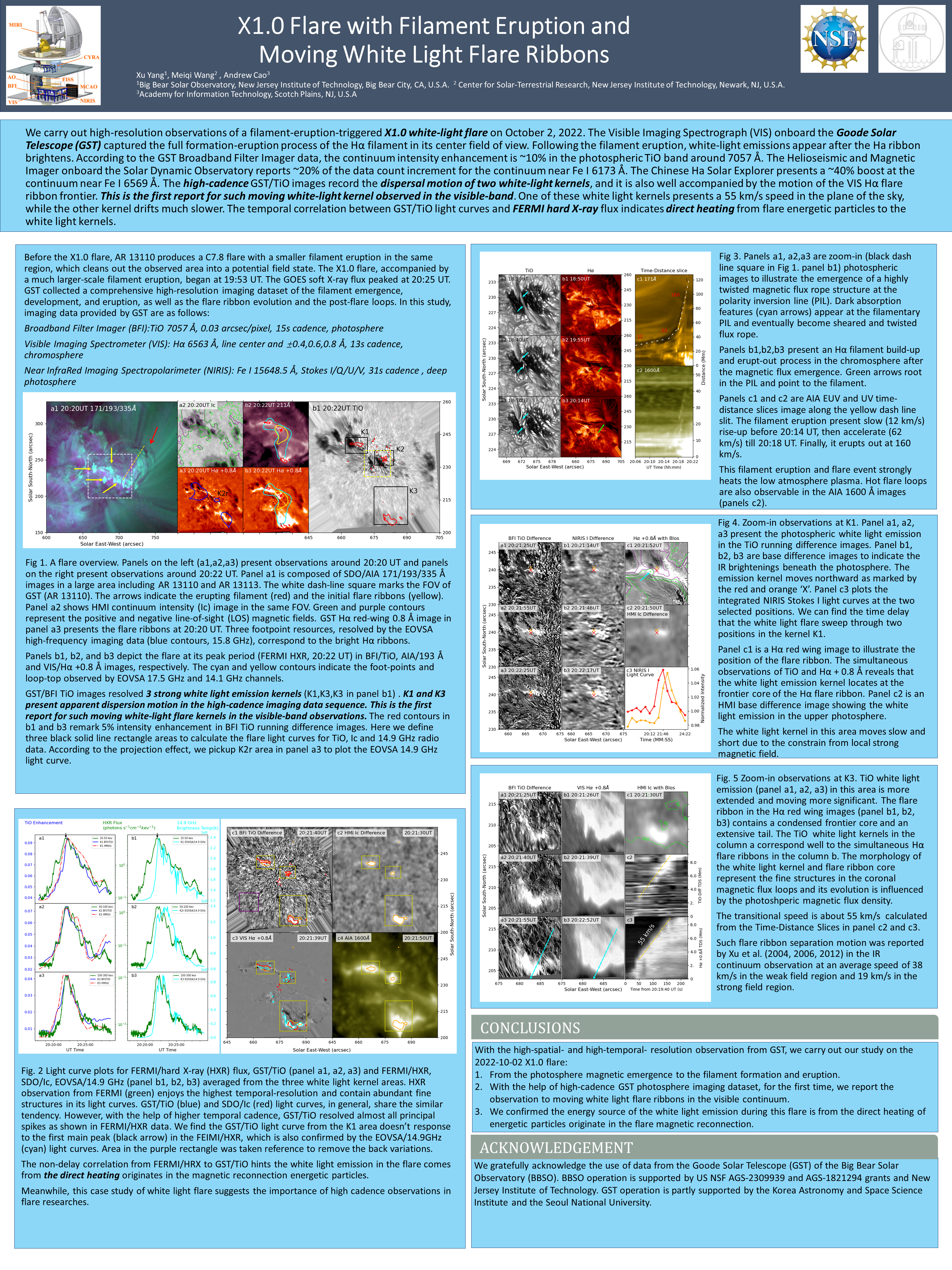Authors: Xu Yang (BBSO/NJIT), Meiqi Wang (NJIT)
We carry out high-resolution observations of a filament-eruption-triggered X1.0 white-light flare on October 2, 2022. The Visible Imaging Spectrograph (VIS) onboard the Goode Solar Telescope captured the full formation-eruption process of the Hα filament in its center field of view. Following the filament eruption, white-light emissions appear after the Ha ribbon brightens. According to the GST Broadband Filter Imager data, the continuum intensity enhancement is ~10% in the photospheric TiO band around 7057 Å. The Helioseismic and Magnetic Imager onboard the Solar Dynamic Observatory reports ~20% of the data count increment for the continuum near Fe I 6173 Å. The Chinese Ha Solar Explorer presents a ~40% boost at the continuum near Fe I 6569 Å. The high-cadence GST/TiO images record the dispersal motion of two white-light kernels, and it is also well accompanied by the motion of the VIS Hα flare ribbon frontier. One of these white light kernels presents a 55 km/s speed in the plane of the sky, while the other kernel drifts much slower. The temporal correlation between GST/TiO light curves and FERMI hard X-ray light indicates direct heating from flare energetic particles to the white light kernels.


